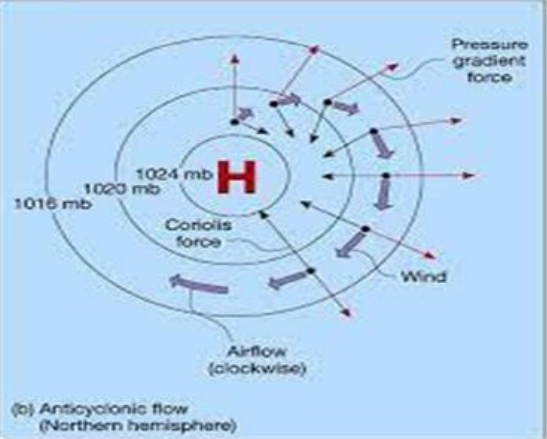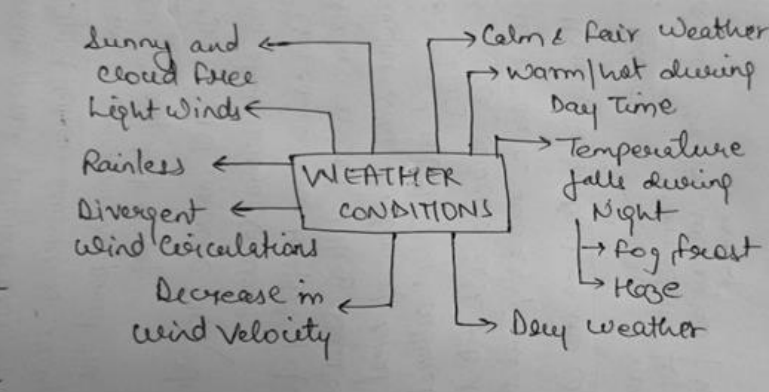
Unlike their whirling counterparts, cyclones, and anticyclones are meteorological heroes, bringing with them periods of fair weather and calm skies. Characterized by high atmospheric pressure and sinking air, these vast areas depict serene weather. Imagine clear blue skies bathed in sunshine, gentle breezes barely whispering through the leaves, and the crisp chill of a cool night – these are all hallmarks of the blissful reign of an anticyclone. But delve deeper, and you’ll find that these atmospheric giants hold more secrets than simple sunshine. From influencing temperature swings to birthing wispy fog, anticyclones paint a diverse canvas of weather patterns, each waiting to be unraveled. Prepare to embark on a journey into the heart of high pressure, where we’ll dissect the characteristics and weather conditions that define these fascinating atmospheric phenomena.
Contents
Answer

Anticyclones are a Weather Phenomenon defined as a Large-scale circulation of winds around central High Pressure – Clockwise in the Northern hemisphere and counterclockwise in the Southern Hemisphere.
CHARACTERISTICS OF ANTICYCLONES:-
- Circular in shape with maximum air pressure at the center and it decreases outwards.
- Descending air because of high surface pressure creates atmospheric stability.
- Cover large areas as the diameter of anticyclones is 75% larger than that of temperate cyclones.
- Temperate anticyclones are so extensive that a single one can cover nearly half of the USA.
- Roughly located at 20-30 degrees these areas have descending air currents from Hadley Cell.
- Widely spaced isobars because of light winds and large area coverage.
- No front formation.
- No cloud formation leads to clear skies; hence, radiation loss is best explained. Summer records high temperatures due to the development of warm air masses and low temperature is recorded during winter due to polar cold air masses.
- These systems intensify over the ocean during summers or high sun seasons. Intensification over land takes place in winter months.

WEATHER CONDITIONS ASSOCIATED WITH ANTICYCLONES

| WINTER ANTICYCLONE | SUMMER ANTICYCLONE |
| Dry and bright with very little clouds. | Sinking air hence no clouds formed |
| Clear skies with low temperatures and light winds often lead to FROST and FOG formation during the night. | Very warm air from continental masses results in hot sunny days, and ‘HEATWAVE CONDITIONS’. |
| Extensive low clouds may produce overcast or ‘Gloomy conditions’. | The risk of thunderstorms at the end of heatwave conditions is often possible. |
| Eg:- ANTICYCLONE GLOOM OF 2016 With the presence of hays, mist, and poor visibility mainly due to sharp temperature inversion. | · European heatwave of 2007 · Greek forest fire of 2007 · European heatwaves of 2022 |
| Cold air from Asia bringing snow to the east of the UK. | Cloud cover over Eastern England is caused by light winds blowing over the cooler North Sea. |
| Influenced regions- Canada, USA, North Western Europe, Alaska, China, Japan. | Mostly influences the weather of the Southeast USA and West Europe. |
BLOCKING ANTICYCLONE occurrence signifies stationary high pressure over a specific large area resulting in constant weather conditions for an extended period. In the Northern Hemisphere, this occurs during spring over the Eastern Pacific and Atlantic oceans. Due to anomalies of climate change, incidents of heat domes formation, heatwaves, and forest fires have also increased.
- USA’s Arizona, California, and Southern Nevada were gripped by blazing heatwaves in 2023.
- Wildfires in Canada in 2023 as one of the largest Canadian Wildfires.
- China Heat Waves of 2022.
- Cerberus Anticyclone affected South Eastern and South Western Europe such as Cyprus, Greece, Italy, and Spain.
- 2019-20 Australian Bushfire.
- Consecutive Heatwave in Europe.
- Heatwaves in Britain.
The world has entered the POSITIVE FEEDBACK LOOP of increasing temperature and increasing Extreme Events leading to Calamities powered by the Anthropogenic Activities of the man himself. The world should work to reach its target of ‘The Paris Agreement to strengthen the Global Response to the threat of Climate Change by keeping Temperature rise below 1.5 Degree Celsius compared to Pre- Industrial levels.

In case you still have your doubts, contact us on 9811333901.
For UPSC Prelims Resources, Click here
For Daily Updates and Study Material:
Join our Telegram Channel – Edukemy for IAS
- 1. Learn through Videos – here
- 2. Be Exam Ready by Practicing Daily MCQs – here
- 3. Daily Newsletter – Get all your Current Affairs Covered – here
- 4. Mains Answer Writing Practice – here

